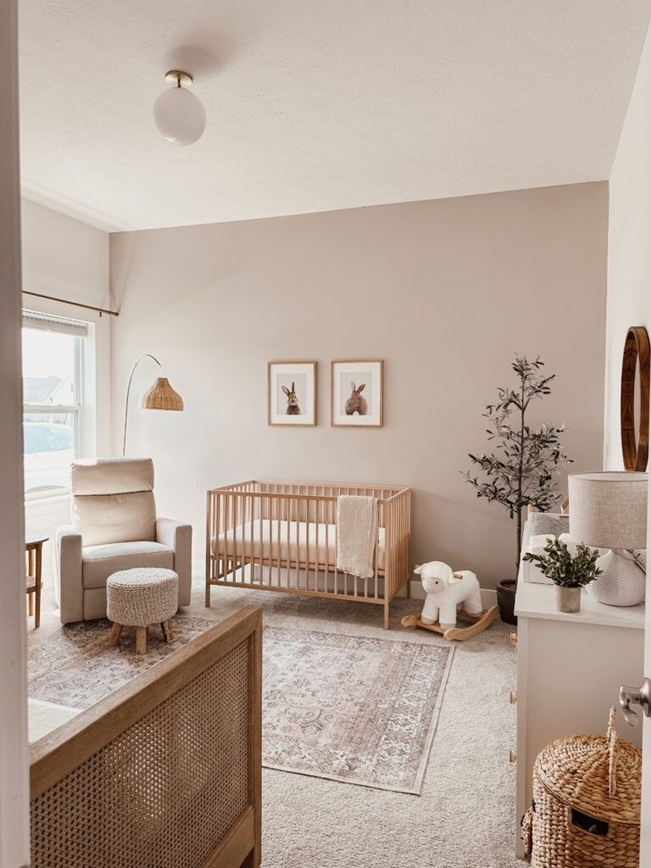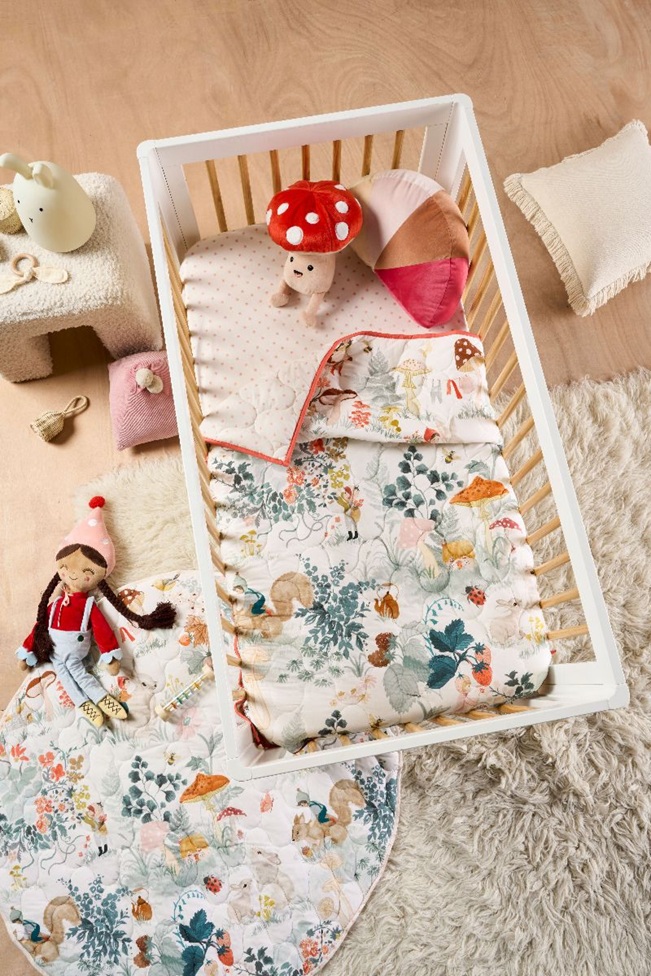You’re expecting a baby, congratulations! But what happens now? How do you prepare to bring your baby home for the first time?
In the first few months of their lives, babies don’t do much besides sleep and eat. Might sound simple enough, but it sadly never is. That’s why even before your bundle of joy is born, it’s important to set up the perfect sleeping area. Somewhere where they will be safe, comfortable, and within reach.
From choosing the right bed to picking cosy nursery bedding sets, here’s some advice on how to set up a sleeping space that works for both you and your baby!
Why It’s Important for Your Baby to Sleep Alone

Most new parents don’t like being away from their babies, even while asleep. That’s a perfectly normal feeling. Sadly, it isn’t always safe or necessarily healthy to be glued to your child, no matter how small and fragile they might seem.
In the past two decades, the importance of young children sleeping alone has been brought to a wider audience, significantly reducing the number of infant deaths each year, as well as promoting independence in children from an early age.
Babies should start sleeping in a separate bed from the moment you bring them home from the hospital. Their cot doesn’t necessarily have to be in a different room. You can place it right next to your bed if you’d like, but please leave some space on all four sides of the cot.
By letting your baby sleep in their own bed, you reduce the risk of SIDS (sudden infant death syndrome) by almost 50%. You also teach your baby to sleep alone from an early age, nurturing their independence.
How To Build the Right Sleeping Environment for Your Newborn
Setting up the right sleeping environment is as important for you as it is for your child. When your child is safe and close to you, your worries dwindle, and you sleep better during the short hours you get to close your eyes.
1. Choose your space
The first step in creating the perfect sleeping space for your babies is choosing the room in which they will sleep. It’s recommended for children to sleep in the same room as their parents for the first year of their life, but it’s not necessarily mandatory.
Your child can sleep in their nursery if you don’t mind walking to a different room every night when they wake up crying. However, if your baby sleeps in a different room, it’s essential to have a baby monitor to hear them or notice if anything is wrong.
Whichever room you decide to let your baby sleep in, whether your bedroom or a separate nursery, it’s necessary to keep the room cool.
A popular saying amongst parents is “A cold baby cries, a warm baby dies”. Babies are usually heavily swaddled, which provides enough warmth for them; there is no need for additional heating.
Keep your room well ventilated and clean at all times.
2. Pick your base
You need to start building your baby’s sleeping area from the bed to its surroundings. There are generally three popular styles of newborn beds.
- Cot – The most popular bed style for young children is a cot. Cots are full-sized beds with railings or mesh borders to protect your child from falling. They are usually designed for long-term use until your child transitions to a toddler bed. Sadly, as they are full-sized beds, cots aren’t usually portable. So, choose where you place them wisely.
- Bassinets – Smaller and more compact beds are called bassinets. Bassinets are intended for use during the initial months of a baby’s life. Their small size makes them light and extremely portable, perfect for moving your sleeping baby around the house as you do housework.
- Baskets – Most commonly known as a Moses basket, baskets are portable beds with a small mattress inside meant to provide a warm and snug environment for a baby to sleep. This form of baby bed is portable and perfect for parents who want to co-sleep with their newborn safely.
3. Blankets and bedding

The bedding is the most important part of a newborn’s bed. The bedding you choose should be firmly tucked under your mattress and should end below your baby’s shoulders.
Prioritise safety and temperature regulation and choose nursery bedding sets made from lightweight and organic materials such as cotton, or at least a material mixed with cotton.
The nursery bedding sets you buy can be any colour or pattern. As babies can’t recognise colours for the first months of their life, the design of the bedding should be to your liking and complement the nursery in which the baby’s cot is.
For the first year of your child’s life, avoid adding excessive blankets, duvets, or soft toys next to them. Keep the bedding minimal and soft to prevent overheating or an allergic reaction, and improve the ventilation in the cot or bassinet.
Babies are known for their tough grip. Ensure every sheet in the bed, from the bedding to the covers, is tucked into the sides of the cot so your baby can’t grip it and throw it over its head. You’d be surprised how often it happens.
Lastly, avoid covering your baby with a blanket for the first year of its life. When putting your baby to sleep, opt for a onesie made from light, breathable materials.
As long as you keep your crib bedding simple, even if your baby moves around while sleeping. It will be safe from the risk of suffocation and sleep comfortably.
4. Options on additional accessories
Bed accessories don’t necessarily have to be just that. There are a few exceptions to those rules. You can accessorise your baby’s cot while keeping them safe, entertained, and satisfied.
What you can safely add:
- Cot Mobile – A mobile is a rotating accessory that attaches to the baby’s cot. It often features multiple objects tied to strings meant to provide sensory stimulation and invoke visual interest.
- Night light – A soft night light that’s perfectly safe to have attached to the top of your cot as long as the cords aren’t too long. It provides a soft and warm glow, offering a sense of safety and security for your child.
- Cot skirt and rail covers – These are a great way to add a pop of colour to the cot without adding a safety risk. The cot skirt goes well below where the baby sleeps and is far outside of reach, while the rail covers don’t fill in the gaps in the railing, allowing air to circulate and protecting your child’s teeth when they are teething and want to bite everything.
























